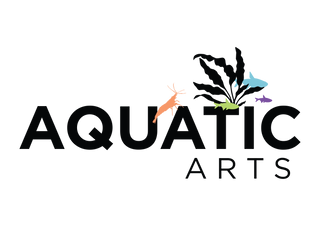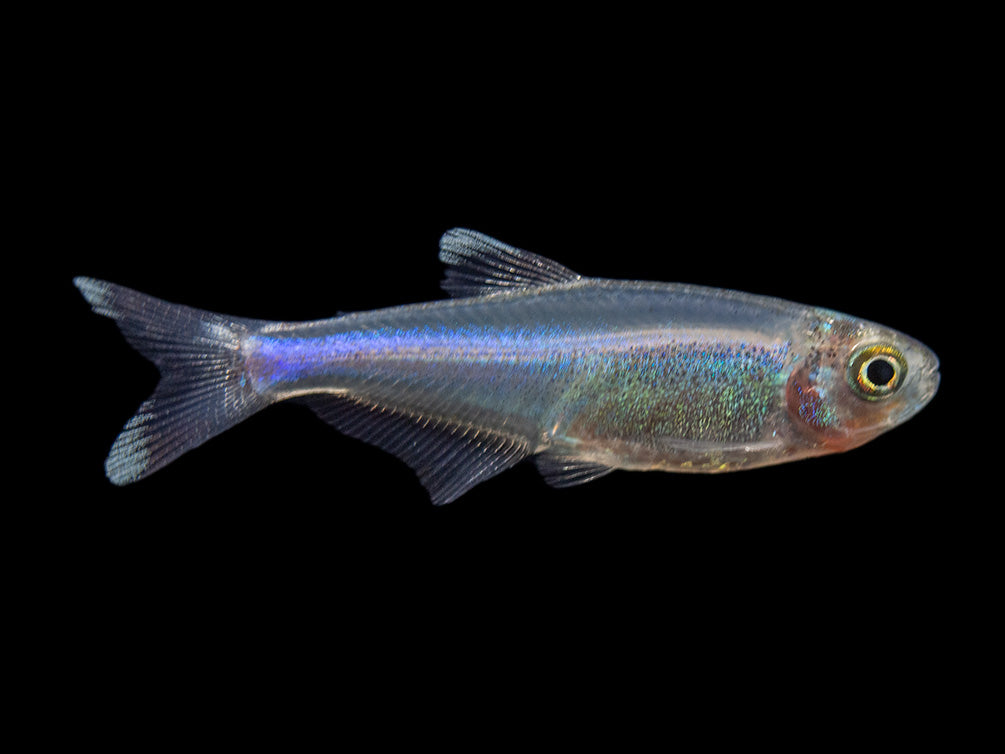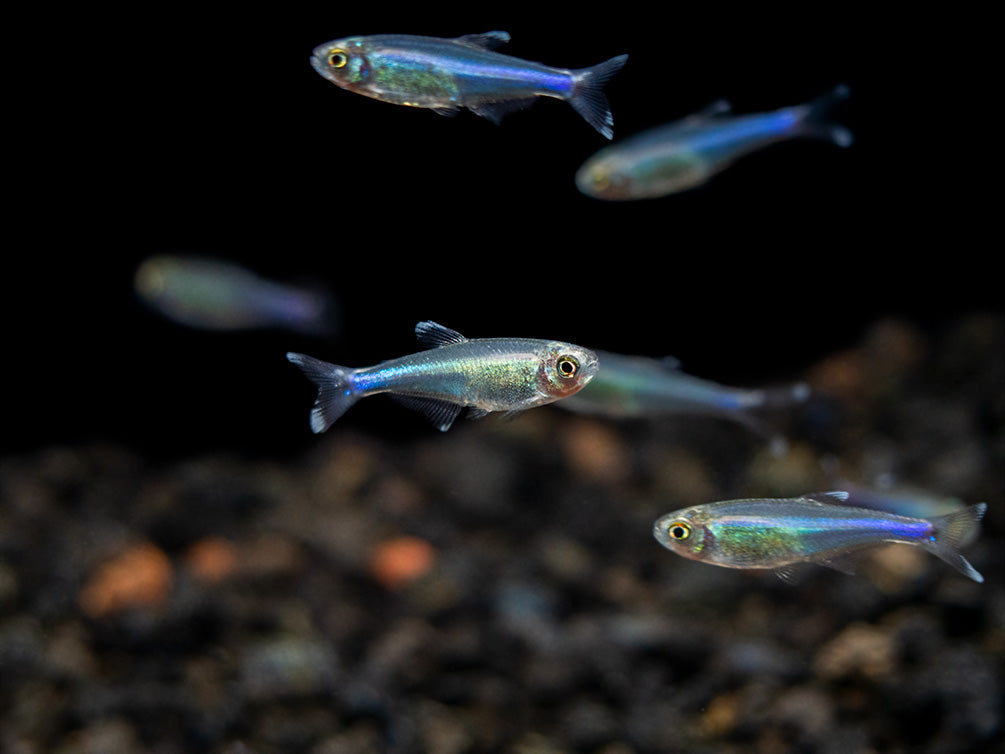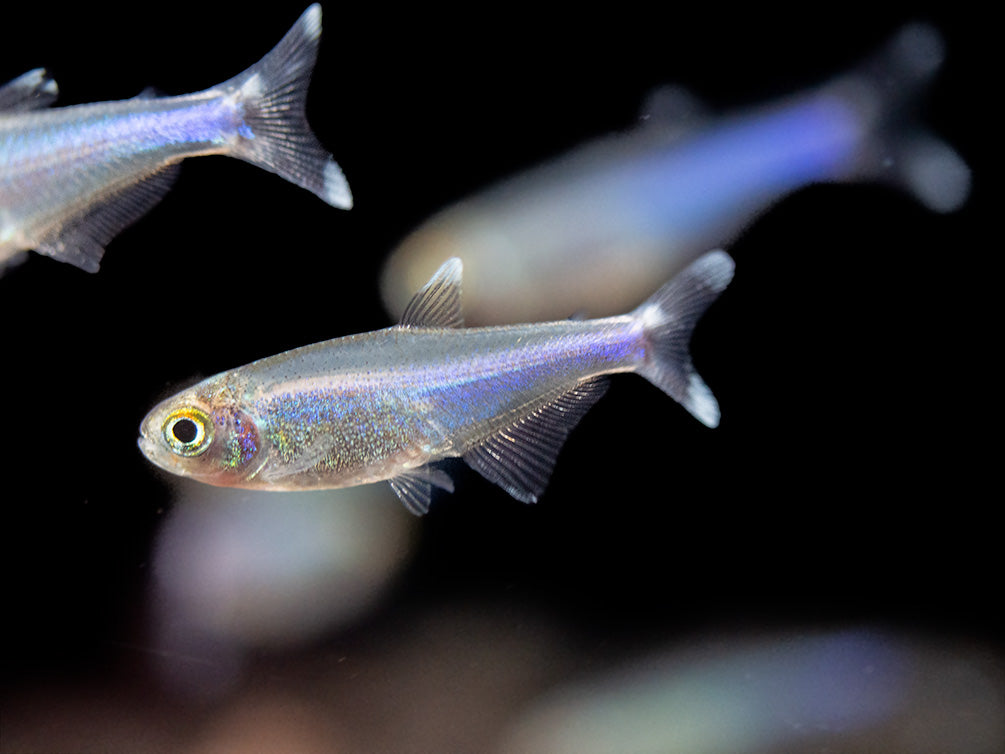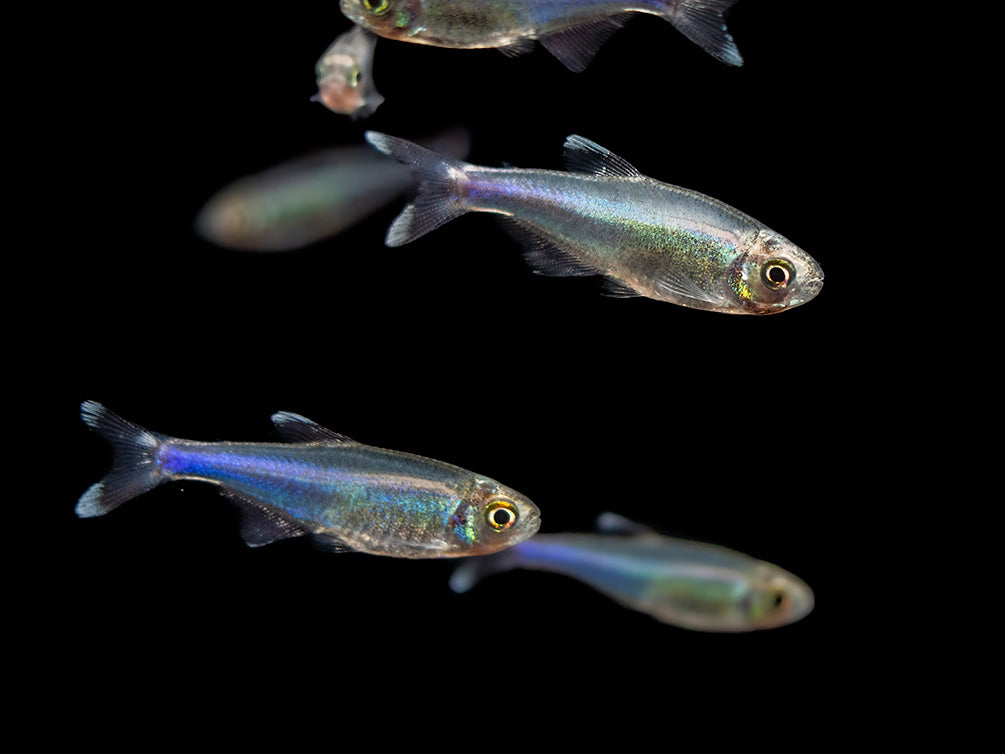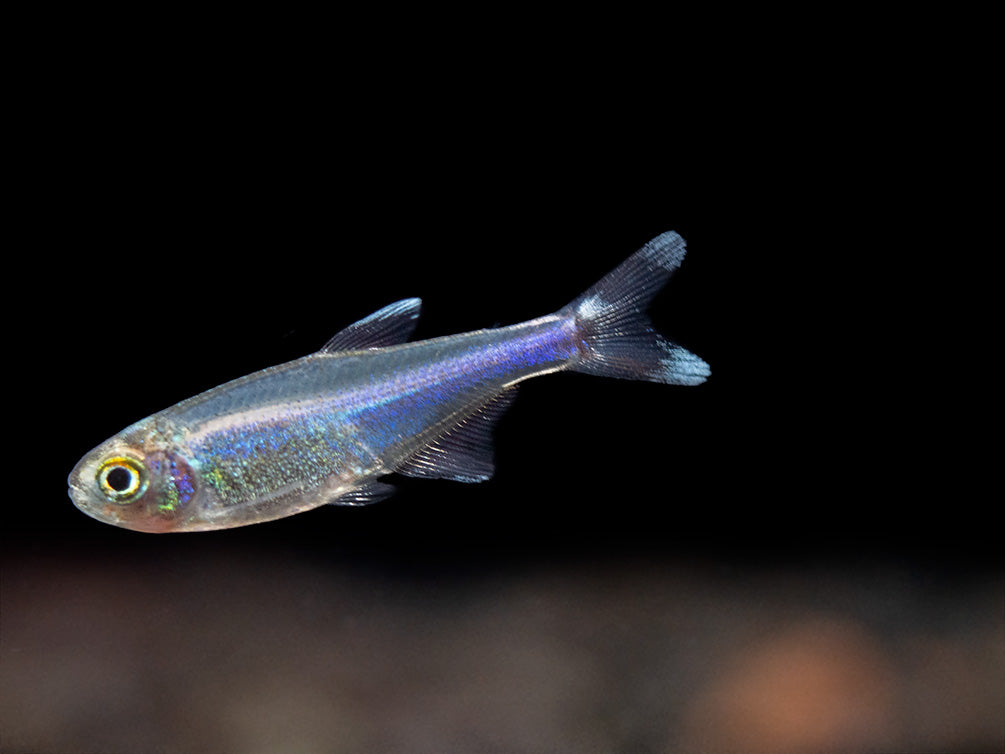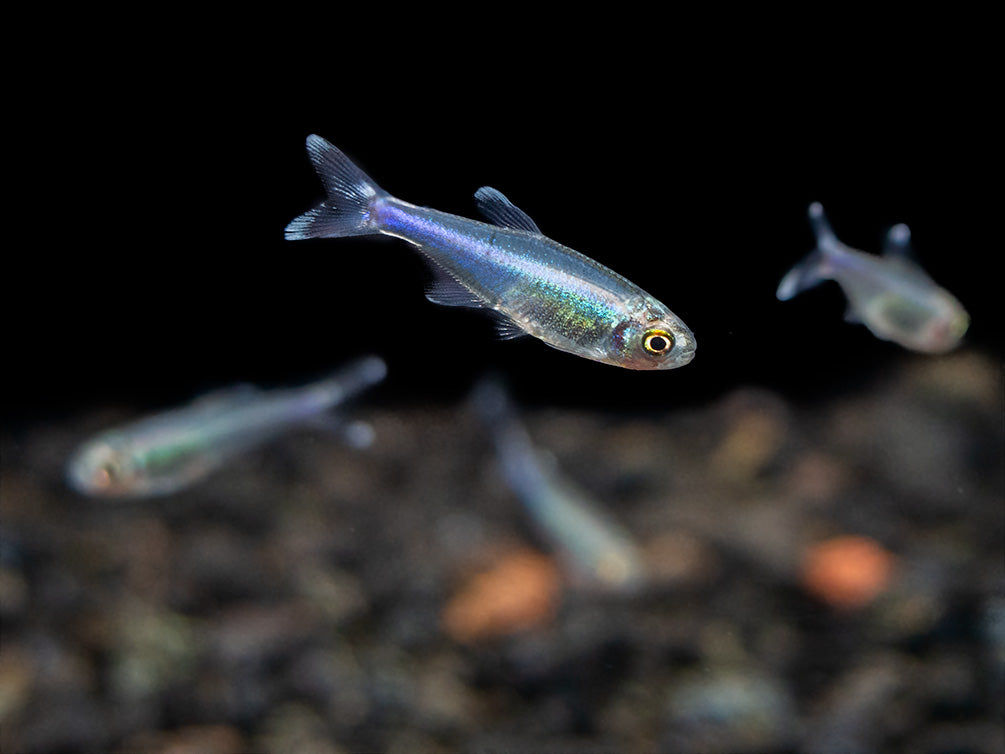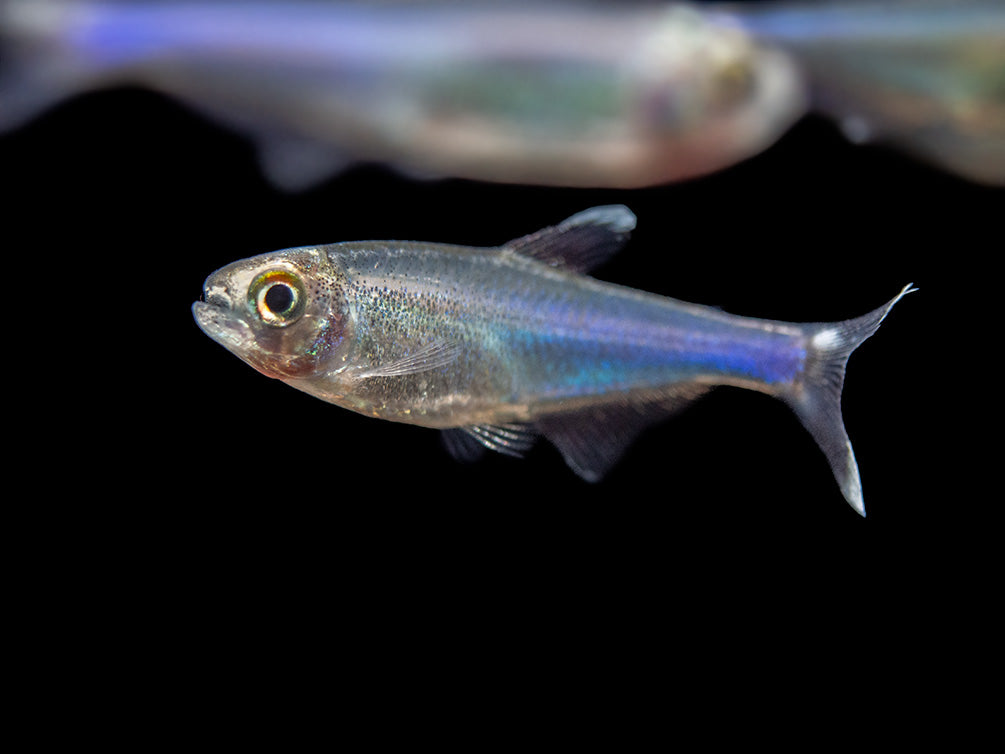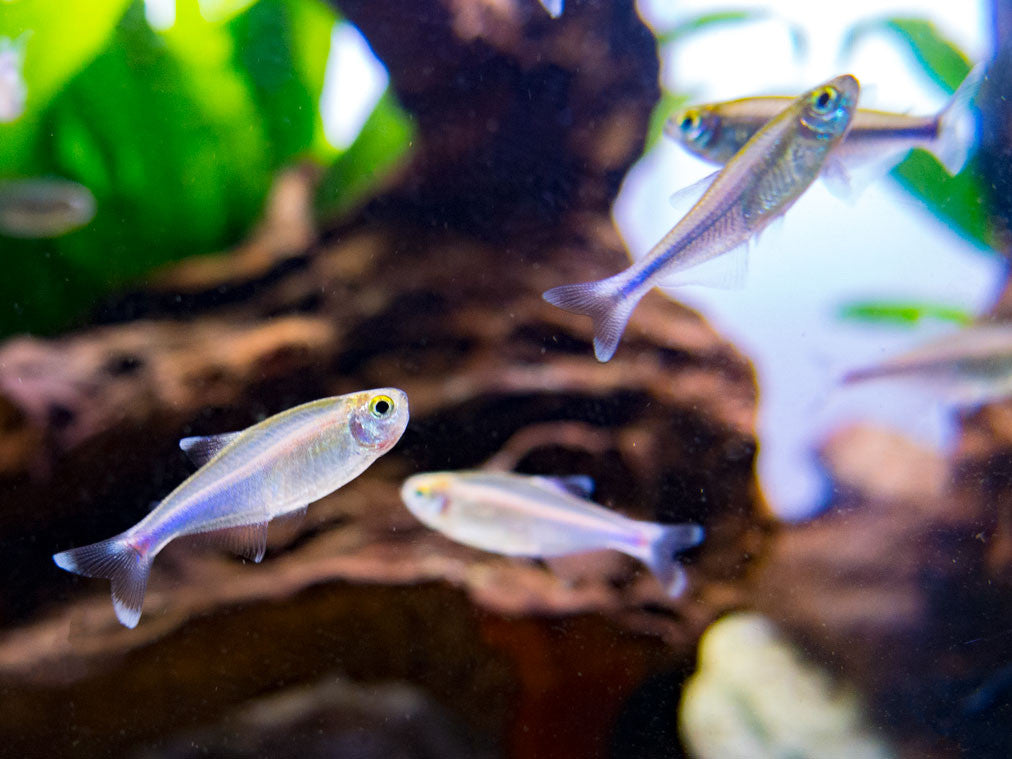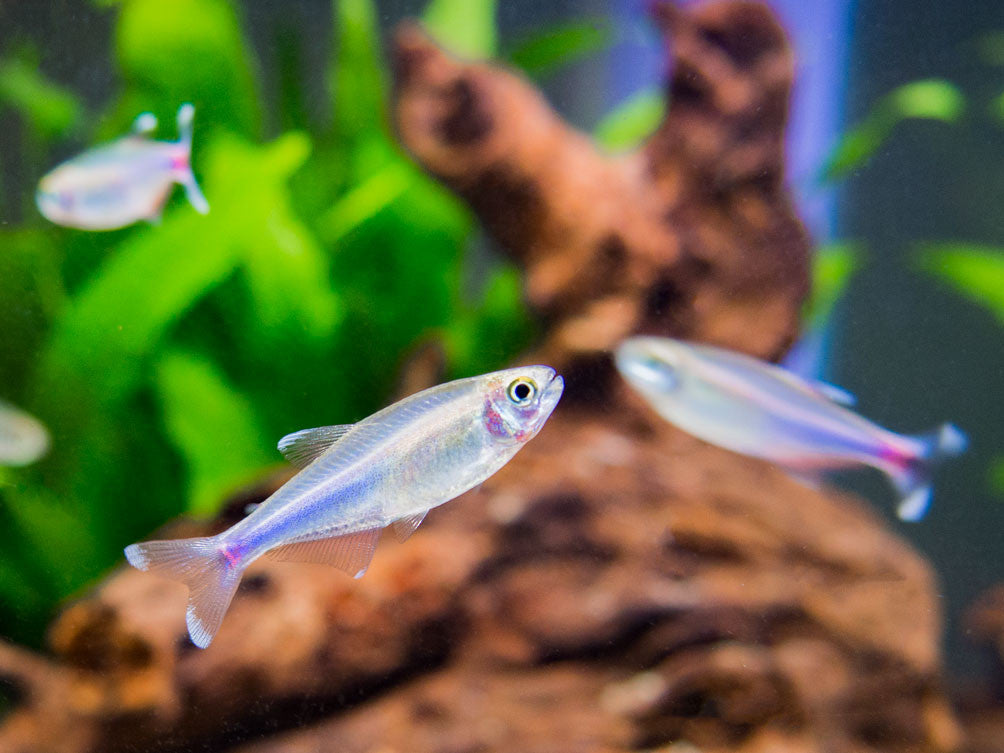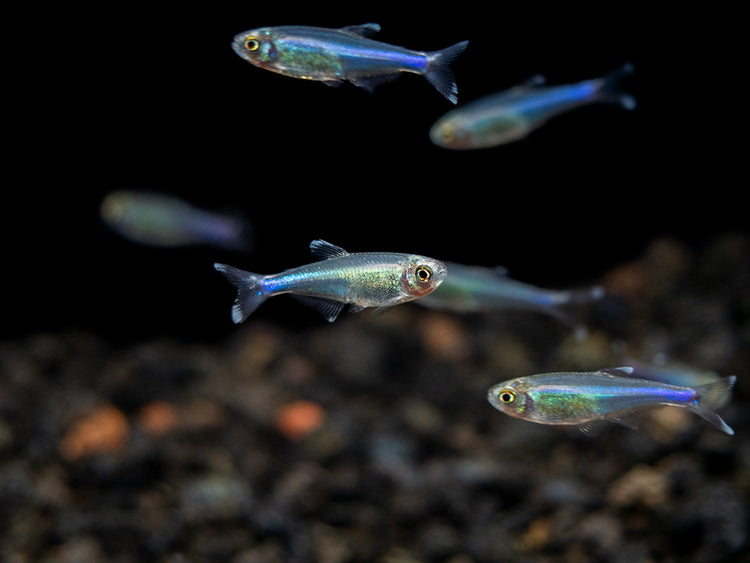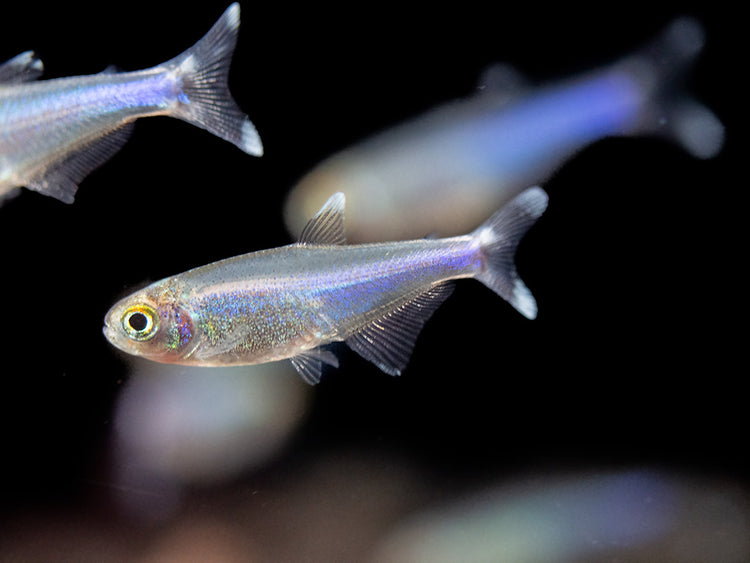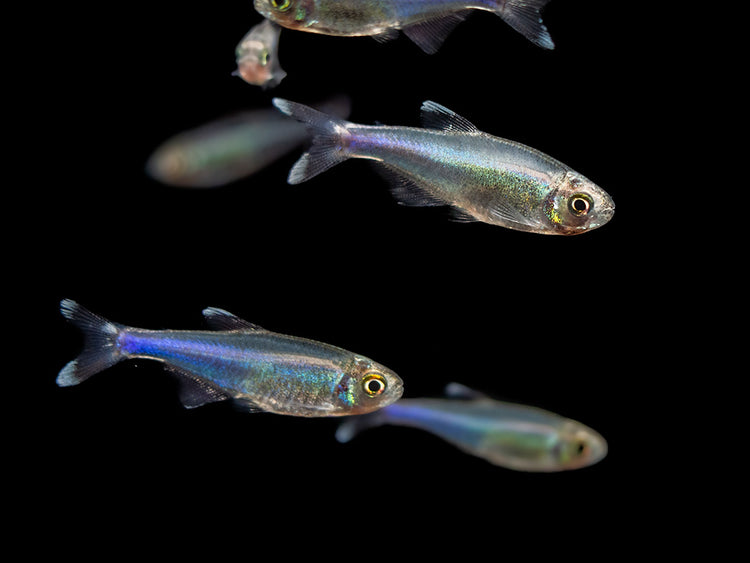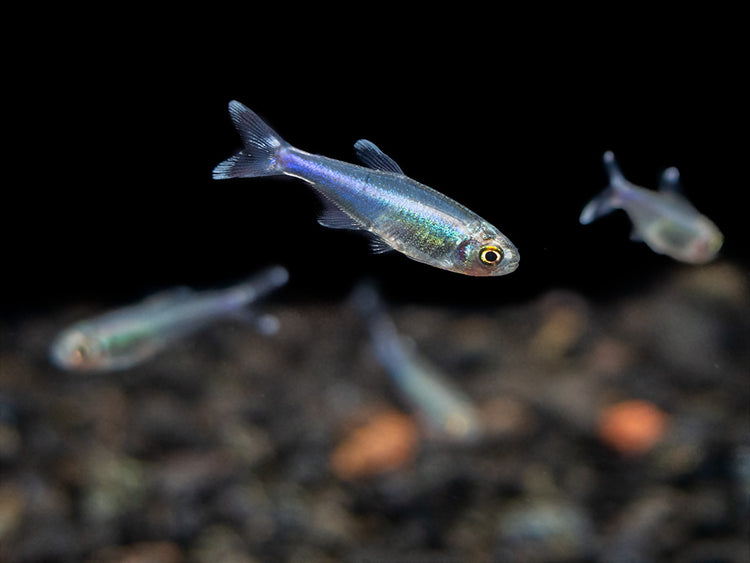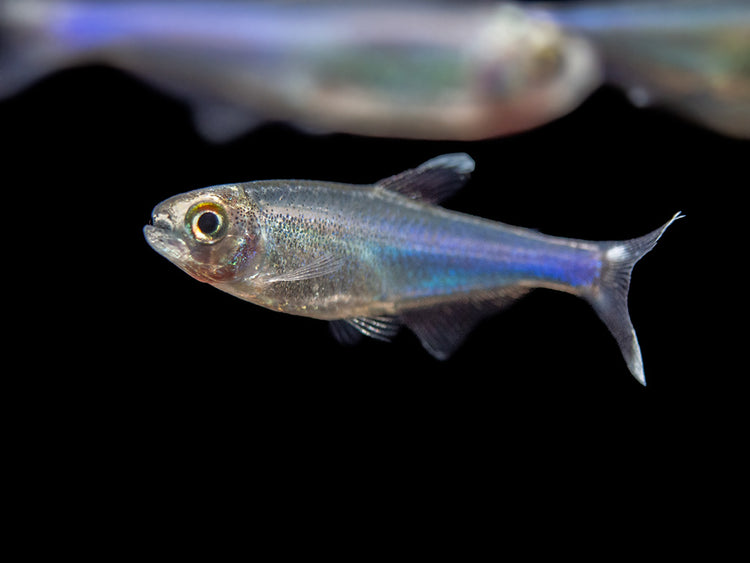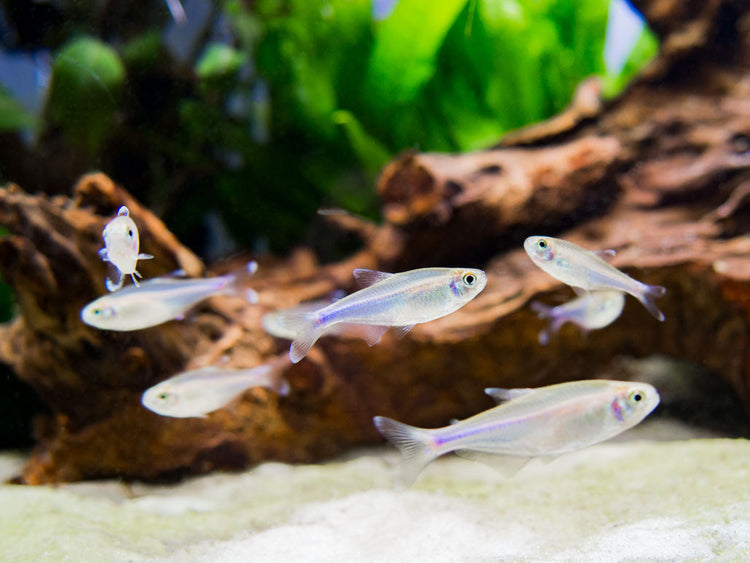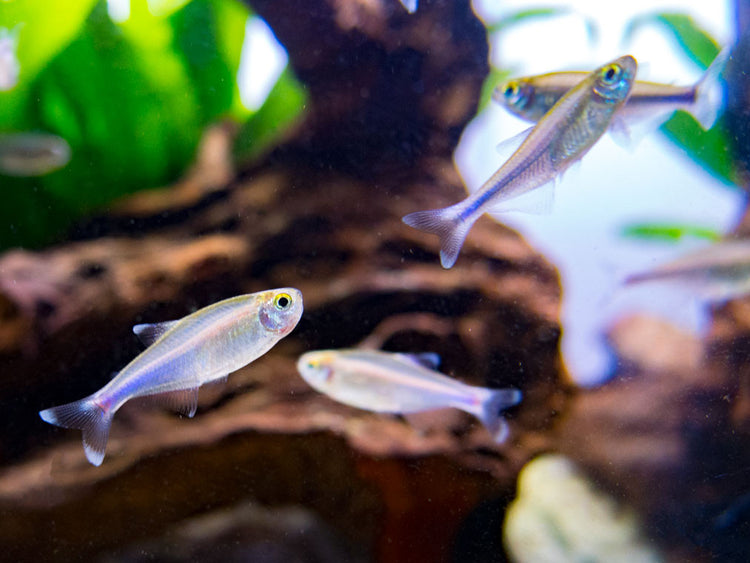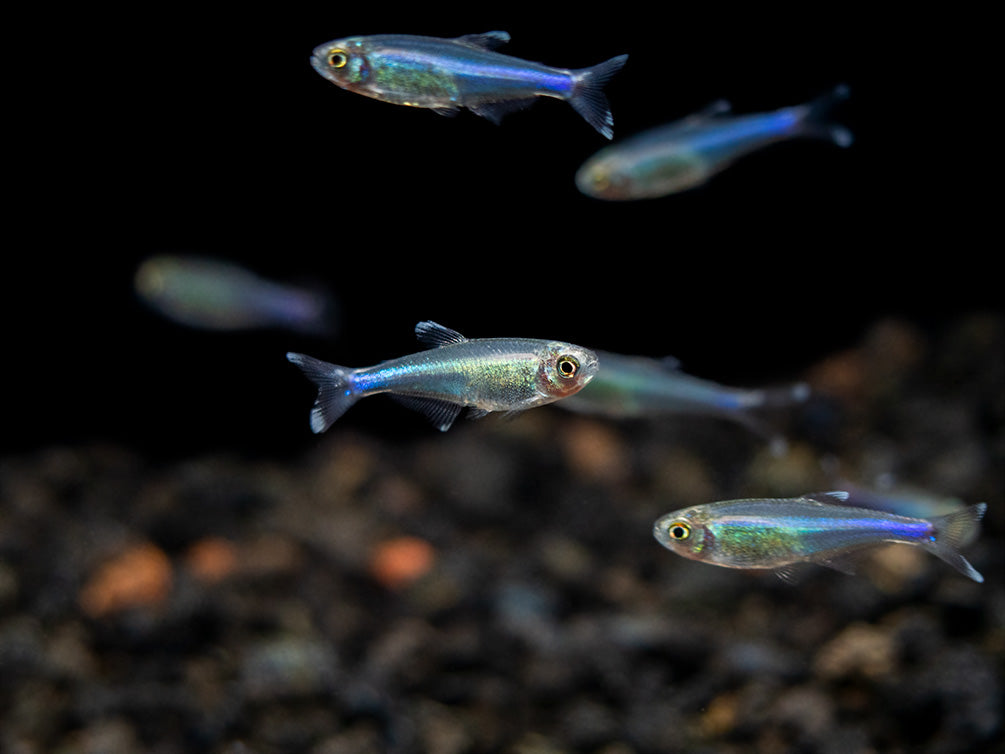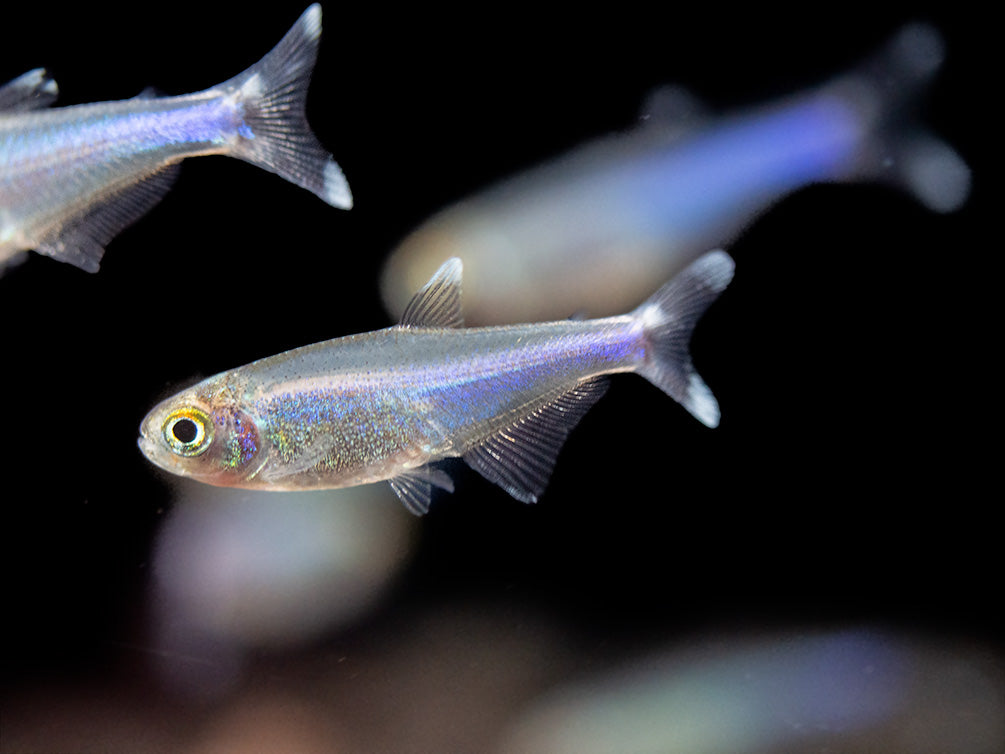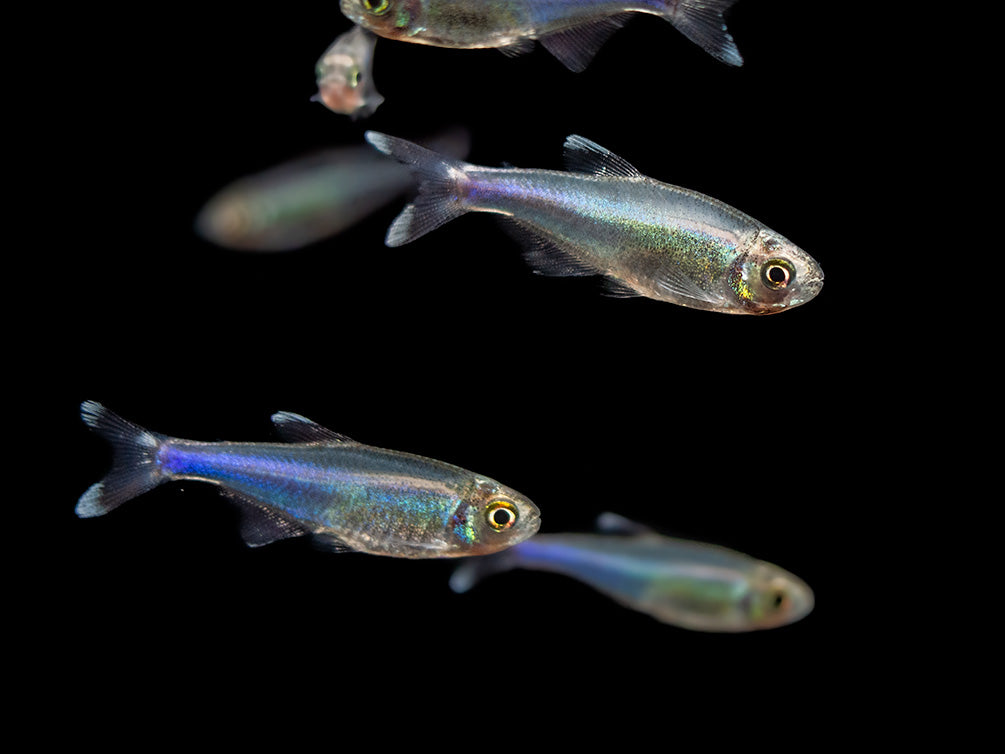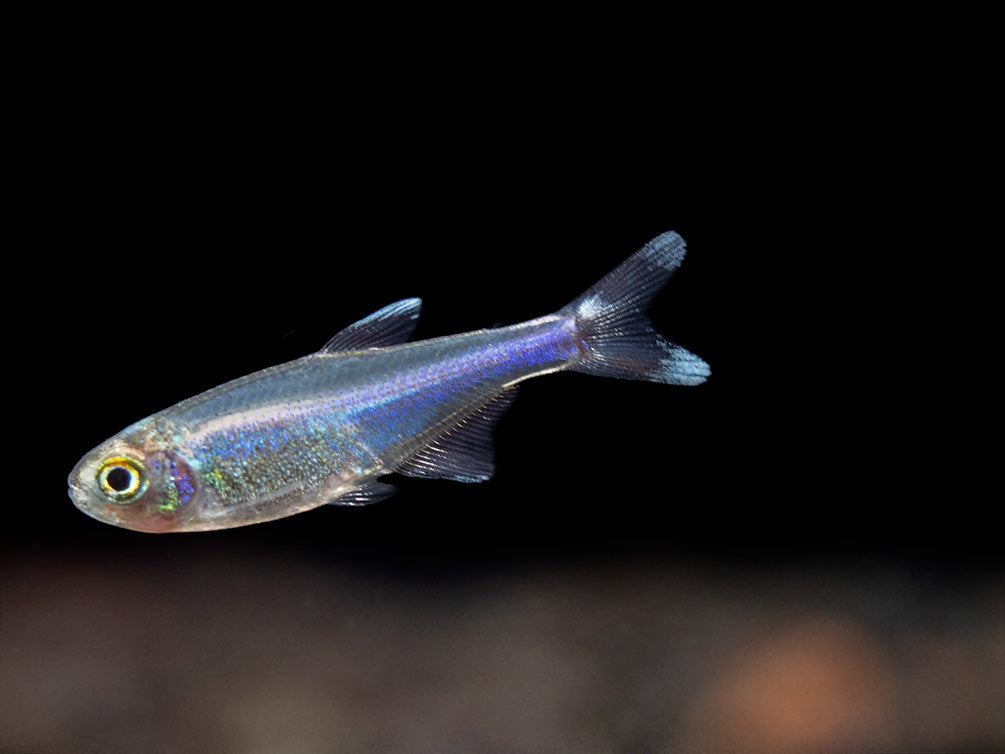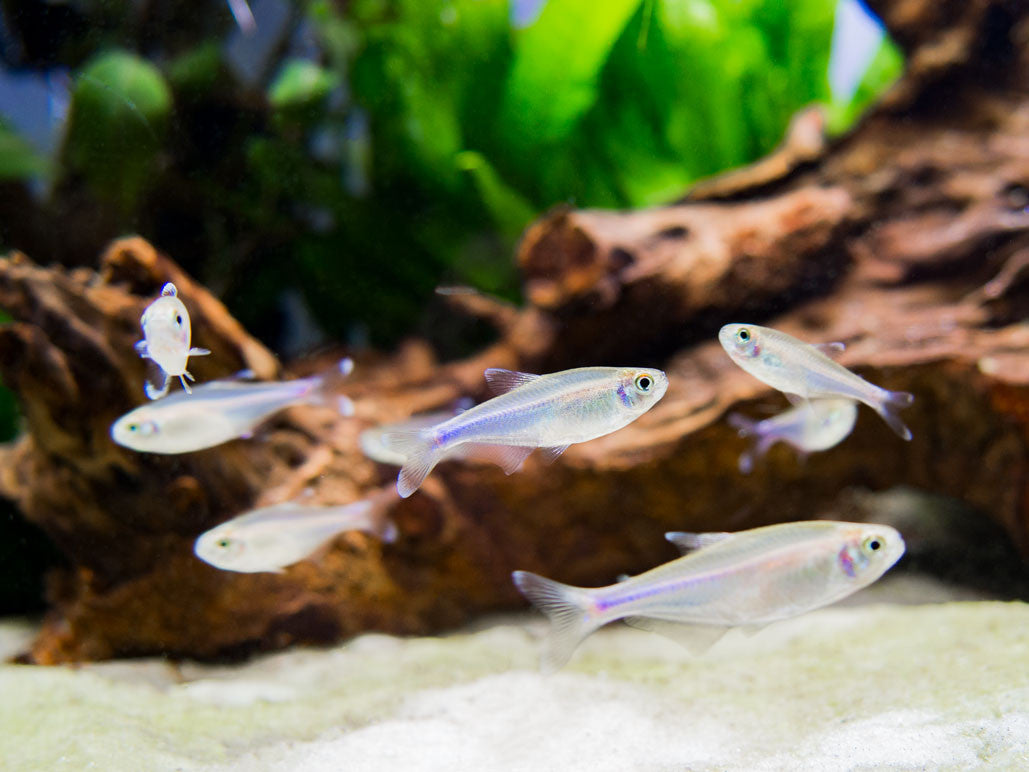Cochu's Blue Tetra AKA Blue King Tetra (Boehlkea fredcochui), Tank-Bred
- In stock, ready to ship
- Backordered, shipping soon
* For the safety of our animals, we now ship live fish exclusively via UPS Next Day Air. If your order contains this item, you will only see UPS Next Day Air as a shipping option during checkout *
Cochu’s Blue Tetra (Boehlkea fredcochui), also known as the Blue King Tetra, is an excellent choice for many medium to large community aquariums, especially planted aquariums. It is one of the few freshwater aquarium fish that has bright blue coloration. In the case of Cochu’s Blue Tetra, most blue coloration is on the back half of an otherwise nearly transparent body. There is also often pink coloration at the base of the tail. Males are usually more vividly marked than females.
Cochu’s Blue Tetras typically occupy the top and middle level of the water column, although they can often be seen swimming and feeding in the middle and bottom levels as well. This tetra is safe with most other peaceful fish, provided that there is plenty of space in the aquarium. It is extremely active, especially at feeding time, so it can be intimidating to slower-moving fish and it may nip at long-finned fish. This harassing behavior is much less likely in a larger aquarium. Larger, peaceful invertebrates can also make good tankmates. This fish could possibly be kept with adult dwarf shrimp, but we do not recommend it in most aquariums due to the extremely active nature of this tetra. Cochu’s Blue Tetra must be kept in schools of 6 or more. Since it is tank-bred, this fish is very adaptable, but its natural habitat contains soft, acidic water that is rich in tannins and leaf litter. Its colors will be brightest with dark substrate.
While not a picky eater, Cochu’s Blue Tetra will thrive and remain very colorful on a varied diet of meaty foods. High-quality flake food, pellets, and frozen or freeze-dried tubifex and bloodworms will all be readily accepted.
- Bright, neon blue coloration
- Peaceful disposition with most other fish
- Very active and noticeable fish in any aquarium
- Excellent for inhabiting the top of the aquarium
- Temperature: 72° - 82° F (22.2° - 27.7° C)
- pH: 5.5 - 7.6
- KH: 5 - 12 dKH
- Minimum tank size: 25 gallons
- Diet: Omnivorous. Will easily accept high quality dry and frozen foods.
- Social behavior: Peaceful, schooling/shoaling.
- Origin: Tank-raised, but indigenous to South America.
- Average adult size: 2 inches (5 cm)
- Average purchase size: 1 inch (2.5 cm)
For the safety of our animals, we only ship live fish, crabs, and select other inverts exclusively via UPS 1 Day Air. If your order contains this item, you will only see UPS 1 Day Air as a shipping option during checkout. If other items are in your cart that can ship with 2 day or standard shipping options the only shipping method you can still select is UPS 1 Day Air.
UPS 1 Day is a description of the duration of time a shipment will spend in transit once it has been shipped. This does not guarantee the package will be shipped the same or next day from which the order was placed.
Shipping Schedule for this service
Current Handling Time:
1-9 business days
Here at Aquatic Arts, we consider the welfare of the live animals we are shipping to be of the foremost importance. This process is much more involved than simply creating a shipping label and affixing it to a box. Depending on the order, it takes from 4 to 7 people to complete this process properly. We check the weather conditions here where they fly out of the Indianapolis UPS facility and the destination for each shipment. We start early each morning and go through a multi-step process to have the day's shipments prepared in time for the UPS pickup. The volume of orders in our system also affects the processing time. Therefore our stated handling time is 1-9 business days.
Shipping Rate
Pricing is by size of package needed to fill entire order and distance it must travel. It will be calculated at checkout.
